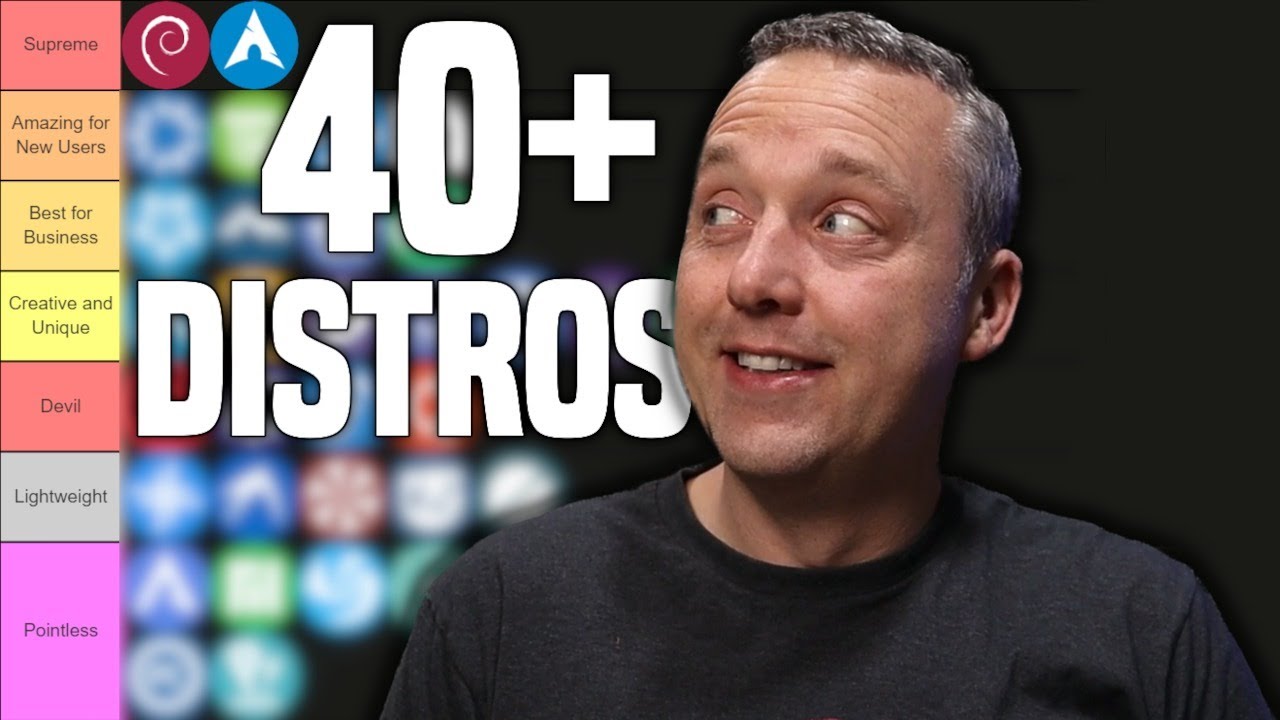Since i see so much linux talk on lemmy i got curious and watched a video about the common distros. How true is the information in this video? The person hardly describes why debian and arch are just better than every other distro. At least i’m definitely now curious about Mint or something for gaming.



yeah i guess this one didnt scream clickbait as much as the other videos of his. I got some in my feed afterwards and quickly realised that this guy doesnt shy away from using clickbait titles.
What is DE or WM? Is it actually that easy to change distro? Dont you have to basically install everything again from scratch? I read somewhere that you can seperate your directories on your SSD so that you can just change the kernel but i dont know how easy or true that is
DE is desktop environment (like gnome, kde, xfce,…) And WM is window manager (like i3, sway, xmonad,…) Which is just a slim version of a de, they usually don’t include things like guis for settings, file managers, … and you just pick what you like and use that. The window manager is responsible for placing the windows in your workspace and most standalone wms are tiling, so they use your monitor space efficiently instead of putting floating windows all over the place. Basically the DE (or WM) is what you interact with most on your PC and a lot of beginners distrohop just to use a different DE when in reality you can just install the other de on your existing system, log out and select the new DE in your login screen.
The biggest differences between distros nowadays are their release cycles and their package managers (and the tepos they’re using, like Ubuntu and Debian both use apt, but have separate repos)
And no you can’t really change distro without reinstalling, you can change kernels tho, every distro will update their kernels from time to time and it’s just a matter of install the new package and reboot into the new kernel.
With separate directories you probably mean partitions, which I’d also say it’s advisable to have your /home partition separated from your / partition. That way if you ever have to reinstall or want to change distro you can just install into the root partition and afterwards add your old/home partition to /etc/fstab and keep all you’re user data and configuration
interesting, so every DE has a WM or are can only one of them at a time be used? And if you use a WM you have to install guis, file managers yourself?
The basic GUI experience in X is provided by the window manager. It controls how your windows are placed ( eg. Tiling vs Stacking / Floating ), how they are decorated ( eg. Max / Min / Close buttons ), and how they behave ( eg. Click to focus ). In X, the window manager runs as an application on the X server. You can only use one at a time.
In Wayland, the “window manager” is the display-server too and is called a compositor. For smaller projects, there are compositor libraries that provide similar capabilities to what the X server did so that these projects can concentrate on the “window manager” part. You can think of a Wayland compositor as equivalent to an X window manager ).
A Desktop Environment comes with a window manager ( or compositor ) and adds other tools that run alongside ( or on top of ) the window manager to provide a full user experience. This may include panels ( eg. think Windows start button, icon bar, and status tray ), docks ( like MacOS ), global menus, notification applets, and the desktop surface itself ( eg. are there icons or other features on the desktop ). A DE usually comes with a standard set of basic applications like a file manager, image viewer, document viewer, media player, and the like.
If you start with a basic window manager then yes you have to add all this other stuff yourself. Of course you may not want some of it and so can have a much lighter experience. You can also just choose tools that you like. Of course, they may not match visually or work perfectly together.
If you use a DE, the experience is curated for you and everything is more likely to work well out of the box. That said, nothing stops you from swapping out whatever components you want. You can even use a different window manager than the DE default.
Thanks alot for the more than enough explanation :)